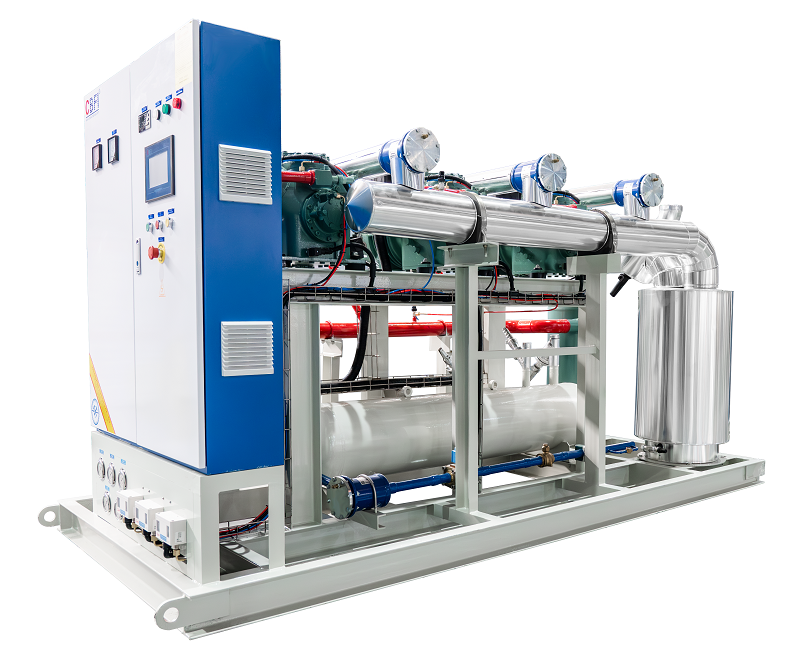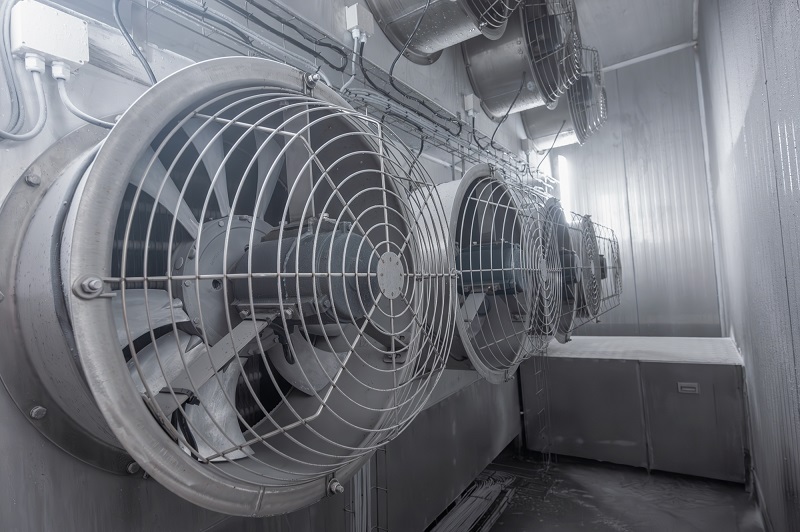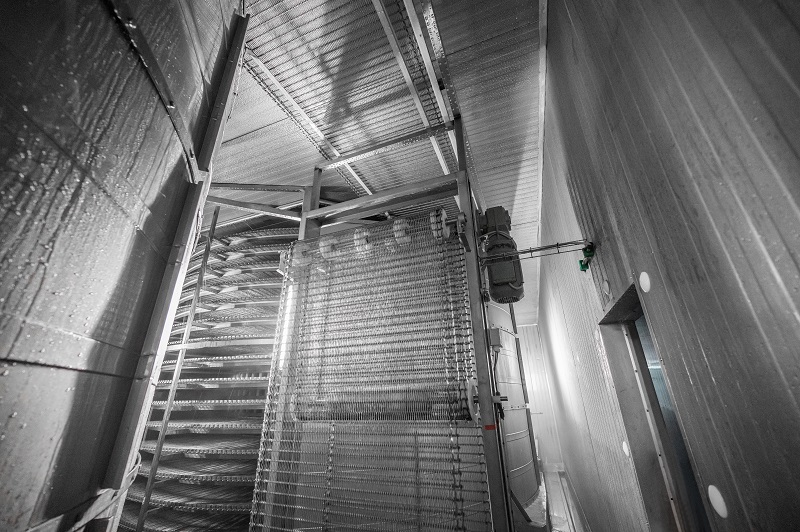Los dispositivos de congelación rápida, como equipo indispensable en la industria alimentaria moderna, brindan un fuerte apoyo a la conservación de los alimentos a través de su tecnología eficiente y de ahorro de energía. Los dispositivos de congelación rápida comunes se componen principalmente de cuatro partes principales: el sistema de refrigeración, el sistema de circulación, el sistema de control y el sistema de aislamiento térmico.

El sistema de refrigeración utiliza un compresor para impulsar el ciclo del refrigerante, logrando el efecto de enfriamiento.
El sistema de circulación se encarga de transferir la energía de baja temperatura generada por el refrigerante a los alimentos de forma uniforme y rápida.
El sistema de control regula con precisión todo el proceso de congelación rápida, asegurando que los alimentos alcancen la temperatura y el tiempo óptimos.
El sistema de aislamiento térmico asegura que los alimentos congelados permanezcan a bajas temperaturas durante el almacenamiento, prolongando su vida útil.
Estructura del dispositivo de congelación rápida:El diseño estructural de los dispositivos de congelación rápida tiene como objetivo lograr un enfriamiento rápido y uniforme.
Normalmente, el sistema de refrigeración de los dispositivos de congelación rápida incluye compresores, condensadores, evaporadores y dispositivos de expansión.

El sistema de circulación incluye ventiladores, conductos de aire, placas congeladoras o cintas transportadoras, que aplican aire frío o refrigerante directamente a los alimentos.
El sistema de control utiliza sensores y controladores de temperatura avanzados para monitorear y ajustar la temperatura dentro de la cámara de congelación, asegurando que los alimentos alcancen la temperatura baja establecida dentro del tiempo especificado.
El sistema de aislamiento térmico, mediante materiales aislantes y una estructura sellada, reduce el intercambio de calor entre el interior y el exterior de la cámara de congelación, manteniendo una temperatura baja.
Principio de funcionamiento de los dispositivos de congelación rápida:El principio de funcionamiento de los dispositivos de congelación rápida se basa en ciclos de refrigeración y tecnología de convección forzada.
Primero, el compresor impulsa el refrigerante a través del sistema de refrigeración. El refrigerante absorbe calor en el evaporador, reduciendo la temperatura de la superficie del evaporador.
A continuación, los ventiladores impulsan el aire frío generado por el evaporador hacia la cámara de congelación, enfriando rápidamente los alimentos.
El sistema de control monitorea la temperatura dentro de la cámara de congelación en tiempo real y ajusta el funcionamiento del compresor y la velocidad del ventilador para lograr un control preciso de la temperatura.
Durante el proceso de congelación, la humedad de los alimentos forma pequeños cristales de hielo en un período muy corto, preservando eficazmente la calidad y el sabor de los alimentos.
Comentarios de usuarios y asesoramiento profesional:Los técnicos de mantenimiento indican que, durante un uso prolongado, los dispositivos de congelación rápida requieren mantenimiento y revisión regulares para garantizar un funcionamiento adecuado y prolongar su vida útil.

Por ejemplo, el condensador y el evaporador se deben limpiar periódicamente de polvo y suciedad, se deben verificar el sellado del sistema de refrigeración y los niveles de refrigerante, y se debe inspeccionar el funcionamiento de los ventiladores y las cintas transportadoras.
Además, la instalación y el uso de dispositivos de congelación rápida deben seguir ciertas pautas y precauciones, como evitar su uso en ambientes húmedos, de alta temperatura o polvorientos y garantizar un suministro de energía estable.
Experiencia de usuario:Los usuarios generalmente informan que los dispositivos de congelación rápida son muy eficaces para conservar los alimentos, enfriarlos rápidamente a bajas temperaturas y mantener su calidad y sabor. Además, los dispositivos son fáciles de operar y mantener, lo que proporciona una gran comodidad. Sin embargo, algunos usuarios han señalado problemas con el consumo de energía y los niveles de ruido, y esperan que estos aspectos puedan mejorarse en el futuro.

Precauciones: